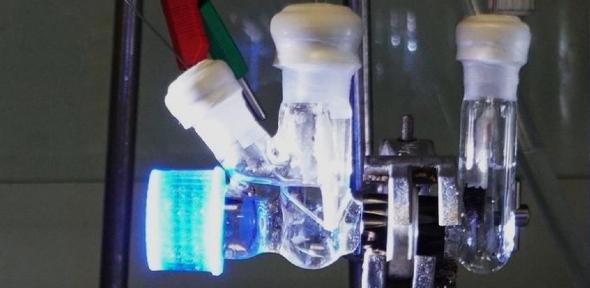
Researchers have demonstrated how carbon dioxide can be captured from industrial processes – or even directly from the air – and transformed into clean, sustainable fuels using just the energy from the sun.
The researchers, from the University of Cambridge, developed a solar-powered reactor that converts captured CO2 and plastic waste into sustainable fuels and other valuable chemical products. In tests, CO2 was converted into syngas, a key building block for sustainable liquid fuels, and plastic bottles were converted into glycolic acid, which is widely used in the cosmetics industry.
Unlike earlier tests of their solar fuels technology however, the team took CO2 from real-world sources – such as industrial exhaust or the air itself. The researchers were able to capture and concentrate the CO2 and convert it into sustainable fuel.
For several years, Professor Erwin Reisner’s research group, based in the Yusuf Hamied Department of Chemistry, has been developing sustainable, net-zero carbon fuels inspired by photosynthesis – the process by which plants convert sunlight into food – using artificial leaves. These artificial leaves convert CO2 and water into fuels using just the power of the sun. To date, their solar-driven experiments have used pure, concentrated CO2 from a cylinder, but for the technology to be of practical use, it needs to be able to actively capture CO2 from industrial processes, or directly from the air. However, since CO2 is just one of many types of molecules in the air we breathe, making this technology selective enough to convert highly diluted CO2 is a huge technical challenge.
"We’re not just interested in decarbonisation, but de-fossilisation – we need to completely eliminate fossil fuels in order to create a truly circular economy.
In the medium term, this technology could help reduce carbon emissions by capturing them from industry and turning them into something useful, but ultimately, we need to cut fossil fuels out of the equation entirely and capture CO2 from the air." Professor Erwin Reisner, Yusuf Hamied Department of Chemistry
The researchers adapted their solar-driven technology so that it works with flue gas or directly from the air, converting CO2 and plastics into fuel and chemicals using only the power of the sun.
By bubbling air through the system containing an alkaline solution, the CO2 selectively gets trapped, and the other gases present in air, such as nitrogen and oxygen, harmlessly bubble out. This bubbling process allows the researchers to concentrate the CO2 from air in solution, making it easier to work with. The integrated system contains a photocathode and an anode. The system has two compartments: on one side is captured CO2 solution that gets converted into syngas, a simple fuel. On the other plastics are converted into useful chemicals using only sunlight.
"The plastic component is an important trick to this system. Capturing and using CO2 from the air makes the chemistry more difficult.
But, if we add plastic waste to the system, the plastic donates electrons to the CO2. The plastic breaks down to glycolic acid, which is widely used in the cosmetics industry, and the CO2 is converted into syngas, which is a simple fuel." Dr Motiar Rahaman., Yusuf Hamied Department of Chemistry
Erwin Reisner is a Fellow and Motiar Rahaman is a Research Associate of St John’s College, Cambridge. Erwin Reisner leads the Cambridge Circular Plastics Centre (CirPlas), which aims to eliminate plastic waste by combining blue-sky thinking with practical measures.
Read the full University of Cambridge article
Sayan Kar, Motiar Rahaman et al. ‘Integrated Capture and Solar-driven Utilization of CO2 from Flue Gas and Air.’ Joule (2023). DOI: 10.1016/j.joule.2023.05.022
Image credit: Ariffin Mohamad Annuar, Yusuf Hamied Department of Chemistry, University of Cambridge

